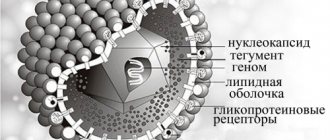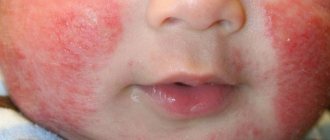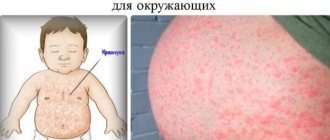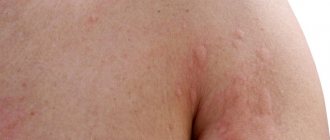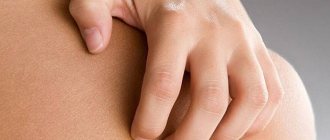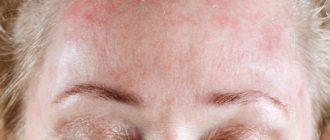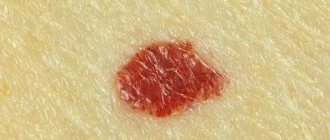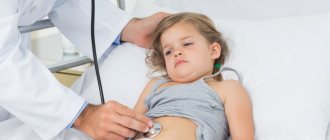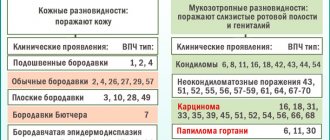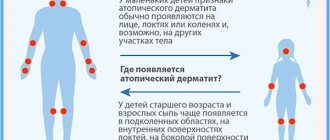Molluscum contagiosum is a viral dermatosis accompanied by the formation of dense papules on the skin with a small depression in the center. The disease is highly contagious and is diagnosed in people regardless of age. The main routes of transmission are contact, household, sexual and water. Molluscum contagiosum on the penis has certain symptoms and does not affect the functionality of the reproductive system. Unlike genital herpes and HPV, it can be treated with complete destruction of the pathogen.
Description and methods of transmission
The rashes on the skin look like pink papules, very reminiscent of warts. As the infection spreads, the affected area increases. They do not itch, but if damaged, there is a risk of infection.
Molluscum contagiosum in adults most often appears as a result of non-compliance with hygiene rules and promiscuity. Location on the face, genitals and inner thighs. The disease is transmitted through skin-to-skin contact and through household objects. An infected person poses a threat to others. The risk increases if the rash is damaged.
Prevention of pathology
Prevention of this disease usually consists of the following:
- It is necessary to be selective in choosing sexual partners.
- The disease should be detected in its early stages of development.
- Timely treatment of patients and their partners is necessary.
- Hygiene rules must be fully observed. This recommendation assumes a daily shower with regular changes of underwear. Bed linen must be changed every week.
- A thorough and regular examination of the skin at home in front of a mirror is required.
How does the disease appear?
Based on the location of the rash, you can determine how the virus entered the body.
During sexual contact with an infected person, foci of neoplasms will appear around the genitals and on the genitals themselves. Nearby skin may also be damaged as the infection spreads. Usually the inner thighs are affected. After contact with a sick person, the first signs of infection will appear within a few weeks. Small punctate nodules from 1-2 mm, which quickly increase in size.
If infected through household contact, a rash can appear on any part of the body. Often in adults in the facial area.
Molluscum contagiosum in adults has the following symptoms:
- pink or flesh-colored papules with a depression in the center;
- protrude above the skin, when pressing on the papules, the contents are released in the form of a viscous mass;
- rashes may change color over time, become pink, pearlescent, and the contents become more liquid;
- in rare cases, as the inflammatory process progresses, an inflamed rim may form around the papule;
- the number of rashes from single to large clusters in diameter from 1 to 10 mm, can merge, forming a large plaque;
- Sometimes the rashes cause itching.
It should be noted that an infected person poses a danger to himself. If the papules are damaged by scratching or any other method, the rash can spread throughout the body and transfer to the face.
Molluscum contagiosum in adults is treated using various techniques and medications depending on the location of the nodules and papules.
Molluscum contagiosum on the face
To treat a viral infection, antiviral drugs are used in the form of tablets and ointments. In order for the disease to pass as quickly as possible and not progress, the immune system should be strengthened. The following drugs are recommended: Viferon, Acyclovir, Ifagel.
The following methods are used for removal:
- cryotherapy;
- laser removal;
- curettage;
- removal with tweezers;
- husking.
Read more about methods for removing molluscum contagiosum After the procedures, be sure to use one of the drugs: “Salicylic acid”, “Chlorophyllipt”, “Ferezol”, “Silver Nitrate”.
It is important not to touch healthy tissue during removal.
If there is a large amount of rash, antibiotic therapy is prescribed; doctors recommend taking a course of Doxycycline therapy.
Molluscum contagiosum on the eyelid
The location of the formations on the eyelid indicates a domestic method of infection. This may be due to concomitant eye diseases against the background of reduced immunity. Such as blepharitis, conjunctivitis, keratitis, as well as colds.
It is necessary to remove all rashes, otherwise the spread of infection will not be stopped.
For the treatment of molluscum contagiosum in adults on the eyelid, the following drugs are used: “Viferon”, “Oxalic ointment”, “Acyclovir”, “Ifagel”.
If the papules are solitary and do not spread over the immediate area, then use treatment with antiviral ointments and stimulate the immune system to fight the virus. If the formations are multiple, then in some cases it is necessary to use: laser removal, cryotherapy, removal with tweezers. At the final stage, disinfectant and healing solutions should be used. Levomekol is not used in the treatment of eyelids.
Read more about what drugs can be used in the treatment of molluscum.
Molluscum contagiosum on the lips
Treatment of the disease in such a localization precludes the use of certain treatment methods. Cauterization with aggressive solutions is not used.
To strengthen the immune system, drugs with interferons are used in the form of tablets and ointments. "Viferon", "Ifagel". Single rashes are treated with antiviral ointments: “Oxalic”.
For adults, the doctor may prescribe an ointment containing hormones.
Please note that hormonal drugs cannot be used during pregnancy. Be sure to follow the dosage, as the drugs have side effects.
Use of folk remedies
How can you cure this disease at home? In order to dry the skin, which will contribute to the speedy disappearance of the pathological focus formed by the mollusk, it is recommended to use several of the following products to choose from:
- Using tincture of string or bird cherry.
- Preparing a paste from fresh ground bird cherry leaves to make a compress.
- Using a solution of potassium permanganate to wipe the affected area.
- The use of celandine tincture. In this case, an alcohol or water based tincture is suitable.
- Using garlic juice. This method is quite often used as a home method of cauterization.
But it should be emphasized that treating molluscum contagiosum (photos can also be found online) without an established diagnosis at home can be dangerous, so there are certain risk factors:
- There is a danger of missing the development of a serious skin disease. For example, the development of malignant or benign neoplasms on the skin.
- Some forms of pathology can occur in patients together with AIDS. In this regard, in such cases, special forms of treatment for molluscum contagiosum are required. At home you can only do harm.
Thus, it is possible to use exclusively folk remedies as part of therapy only after consultation with a dermatologist who can make an accurate diagnosis.
Molluscum contagiosum on the genitals
The appearance of foci of infection on the genitals indicates infection from a partner or failure to comply with hygiene rules.
Single rashes can go away on their own if you have good immunity. However, during sexual contact the infection will be transmitted to the partner. If the papules are damaged, the virus will spread throughout the body and the affected area may increase.
The following methods are used for treatment:
- laser cauterization;
- cryodestruction;
- scraping with a Volkmann spoon;
- removing nodules with tweezers.
The following medications are prescribed: Venasoid, Vartek, Spanish Fly, Infagel, Acyclovir.
Please note that ointments should not be applied to mucous membranes. You can treat the lower abdomen, pubic area, and scrotum.
Molluscum contagiosum on the penis
It is imperative to remove tumors on the genital organ to prevent the spread of infection. During sexual intercourse, damage to the papules cannot be avoided.
Cauterizing solutions should not be used. It is recommended to use the following medications: antiviral drugs, antibacterial agents. They have proven themselves well: “Interferon”, “Genferon”, “Venosoid”. Removal is carried out using laser coagulation, cryodestruction, and curettage. These methods require mandatory anesthesia. Cauterization with trichloroacetic acid is carried out in a clinic. Apply pointwise once a day, without covering healthy areas of the skin. After 6 hours, the solution is washed off with water.
Molluscum contagiosum on the labia
The appearance of the first signs of a viral infection on the labia requires immediate medical attention. The doctor will suggest removing the papules mechanically or using a laser. All procedures are carried out with preliminary anesthesia.
The doctor will prescribe medications that will help quickly heal the sites where the papules were removed and support the immune system.
Antiviral ointments are not prescribed for treating mucous membranes.
After removing a large number of nodules, it is necessary to take antibacterial drugs. Wounds are treated with iodine solution or potassium permanganate.
Molluscum contagiosum on the pubis
Treatment for pubic molluscum involves the use of the following medications:
- antiviral medicines: “Infagel”, “Acyclovir”, do spot treatment up to 3 times a day;
- “Trichloroacetic acid 3%” solution is applied carefully, without touching healthy areas of the skin, after 30 minutes the solution is washed off;
- "Vartek" is applied pointwise twice a day.
Read more: Ointments for molluscum contagiosum
If applying ointments does not give the desired effect, then it is necessary to use other treatment methods. A specialist may suggest exposure to liquid nitrogen, laser therapy, mechanical curettage, or removal with tweezers.
Please note that it is prohibited to perform the removal procedure yourself by scraping or tweezers. This can lead to infection and spread of foci of infection.
Molluscum contagiosum in the groin
It is necessary to treat nodules in the groin at the first symptoms. To do this, you need to use drugs that stimulate the immune protective functions of the body - “Viferon”, “Infagel”.
By applying the ointment to the rash, we stimulate the body to cope with the virus on its own. To enhance the effect, it is recommended to take the drugs in tablet form.
To remove molluscum in the groin, physical methods of removing papules are also used: exposure to liquid nitrogen, laser therapy, curettage.
Molluscum contagiosum in adults should be treated in the early stages. The reason for the development of the disease is the frequent change of partners and non-compliance with hygiene rules. Modern treatment methods will help you easily and quickly cure molluscum. If the procedures are carried out correctly, the infection will stop its spread. Self-medication can aggravate the situation; before using any medications, be sure to consult a dermatologist!
Principles of transmission of viral infection
The disease is transmitted exclusively from person to person. Animals do not get sick and are not carriers of the virus. The most common route of transmission is through household contact, in particular, any tactile contact, for example, shaking hands, massage, boxing, pressing close to each other, etc.
Indirect contact route - infection occurs due to touching common objects on which particles of the pathogen are present. Infection can occur through cutlery, dishes, hygiene items, and furniture upholstery.
Important: sexual transmission is observed only in adults who have had sex without using a condom. Pathological nodules appear in the immediate vicinity of the genital organs or on them.
Molluscum contagiosum on the penis appears not only as a result of unprotected sexual intercourse. There is a possibility of infection by water. A sick person enters the water, as a result of which viral particles remain in it, which can be “picked up” by a man who comes into contact with the same liquid. Infection occurs in a sauna, swimming pool, bathhouse, or water park.
Recommended reading:
Contact with a pathogen does not always mean infection. Some men are immune to infection. If it is absent, the probability of getting sick is 100%. The risk group includes patients with immunodeficiency, men over 60 years of age, and people taking glucocorticosteroids for a long time.
